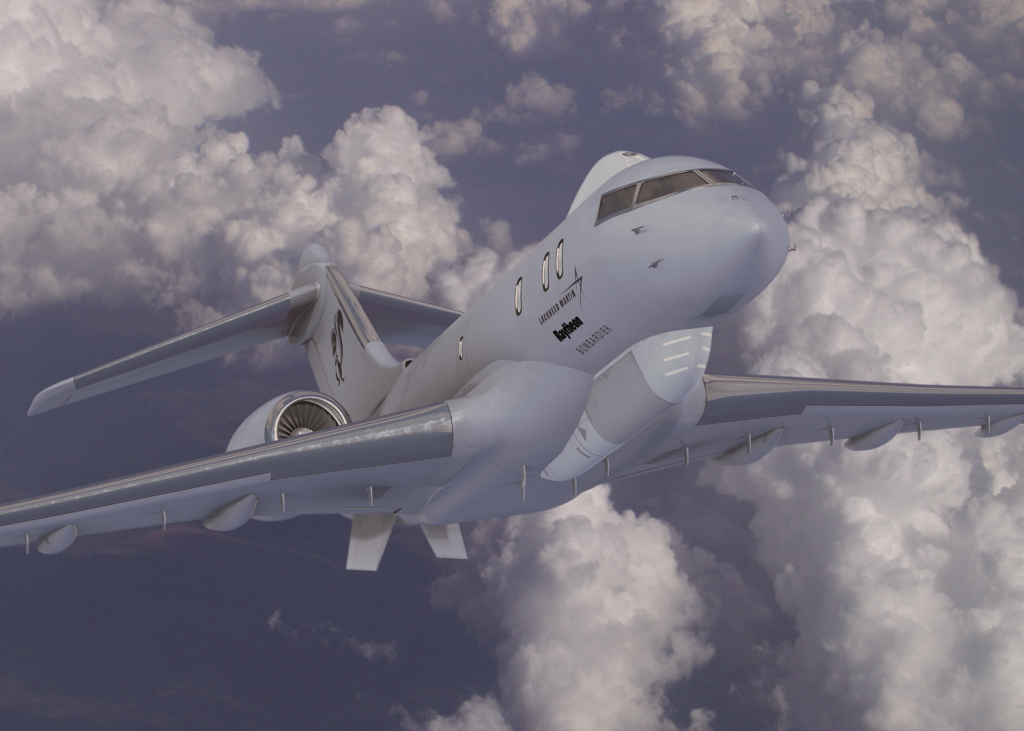
LE BOURGET – Tuesday Bethesda-based Lockheed Martin made public that it
will partner in a new team finalized last week with Bombardier and Raytheon to compete for the US Air Force’s next-generation Joint Surveillance Target Attack Radar System (JSTARS) replacement.
Under the leadership pf Lockheed Martin Skunk Works, reknowned for integrating intelligence aircraft, Raytheon will provide the primary sensor package while Bombardier will supply its large cabin, long range Global 6000 as its primary platform choice for now understanding that the agreement with the Canadian airframer is not exclusive.
The U.S. Air Force plans to recapitalize its 18 E-8C Joint Surveillance Target Attack Radar System aircraft with 17 new jets. Built on used and missionized Boeing 707-300s, the E-8 JSTARS currently in operation use long-range radar to locate, track and classify ground vehicles from a distance of up to 124 miles. The E-8C fleet is aging and maintenance hungry and moving to a business jet is hoped by the Air Force officials to reduce operating cost. With the reduced aircraft size, the Air Force also expects to shrink its onboard crew from 18 to 10.
The service plans to spend about $4.3 billion on the JSTARS replacement.
The Lockheed-led team’s platform would be based on an ultra-long-range Bombardier jet, which its producers hope will enjoy a competitive advantage by being able to deploy farther and stay in the air longer without refueling. The entry will also feature open architecture, allowing for future technological upgrades as needed. Nevertheless, the motivation behind Lockheed desire not to create exclusive arrangement with Bombardier is based on previous experiences.
The company’s selcetion of the Embraer ERJ145 proved to be too small for the US Army’s Aerial Common Sensor program.
For its part, Northrop Grumman announced last week that it will partner with Savannah based Gulfstream Aerospace and L-3 on its entry, based around the Gulfstream G550 business jet. While Northrop’s design, like Lockheed’s, will be built around a large business jet, Boeing has indicated that it will use a modified Boieng 737-700 commercial jetliner for its entry in order to meet any future requirements and growth of the mission equipment
The Air Force plans to award up to three pre-development contracts for up to 12 months of work next August then to release a request for proposals for a development contract in late 2016 or early 2017 with a contract award to follow in late 2017.
Two development aircraft are to be delivered in 2019.
Bombardier is well known and recognized for its special mission aircraft. Over the years, many Canadair 415, Dash8, Learjet, Challenger Series 600 and Global has fullfilled such missions including Global Express based Raytheon Sentinel R1 supplied to the Royal Air Force.
Already four Bombardier Global Express modified by NorthropGrumman as a platform for the Battlefield Airborne Communication Node are flying into the US Air Force as E-11A. A BD-700 has also carried the High-Altitude Lidar Operational Experiment (HALOE) payload, deploying to Africa and Afghanistan to survey large areas rapidly
Boeing is offering the Maritime Surveillance Aircraft or MSA built around the Challenger 604, 605 and 650 modified by Field Aviation in Toronto then flown to Boeing for fitting a P-8 Poseidon electronic suite.
Diplômé universitaire en histoire, journalisme et relations publiques, en 1993, Philippe Cauchi amorce une carrière de journalisme, analyste et consultant en aérospatiale. En 2013, il fonde avec Daniel Bordeleau, le site d’information aérospatial Info Aéro Québec.
Commentaires